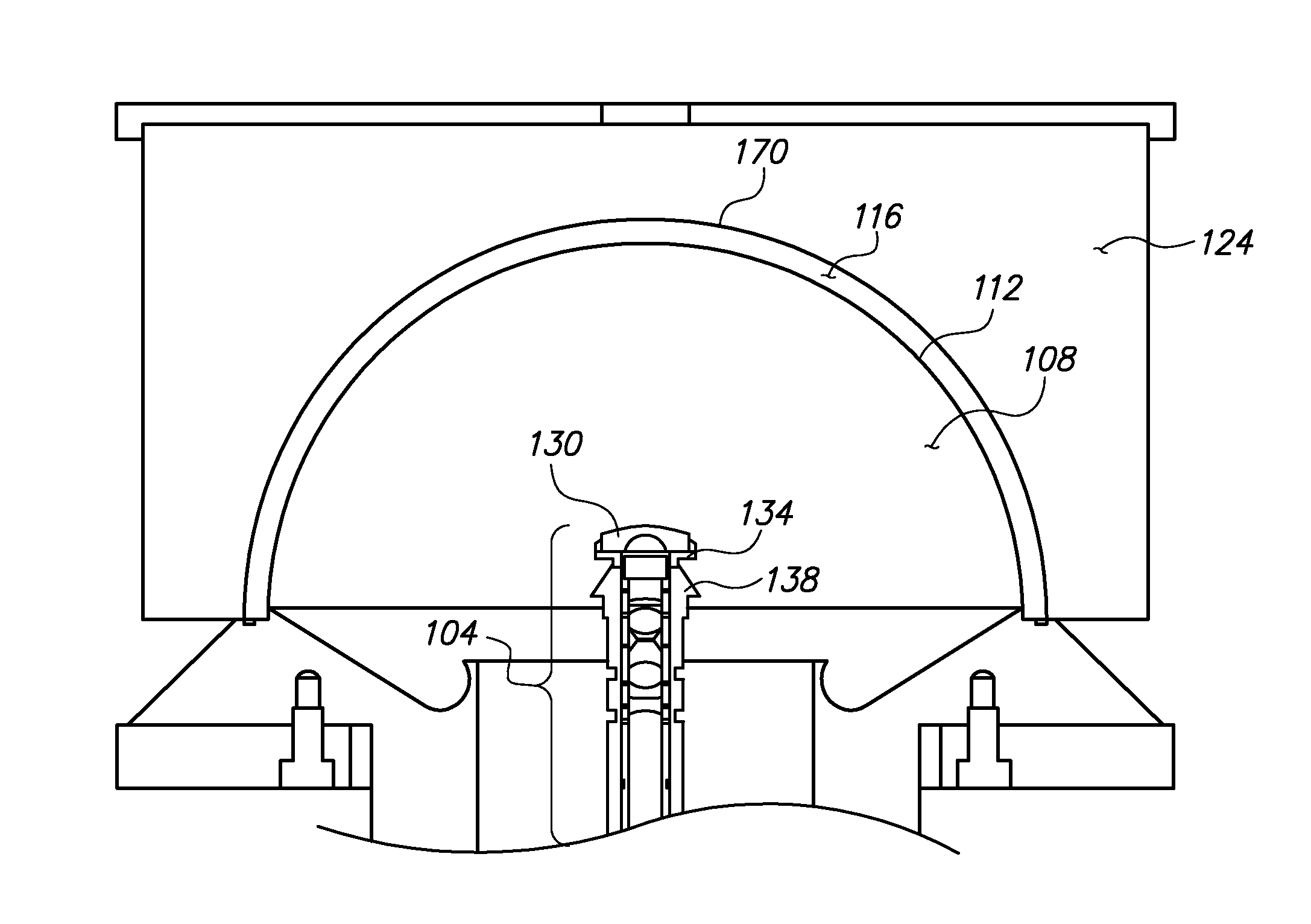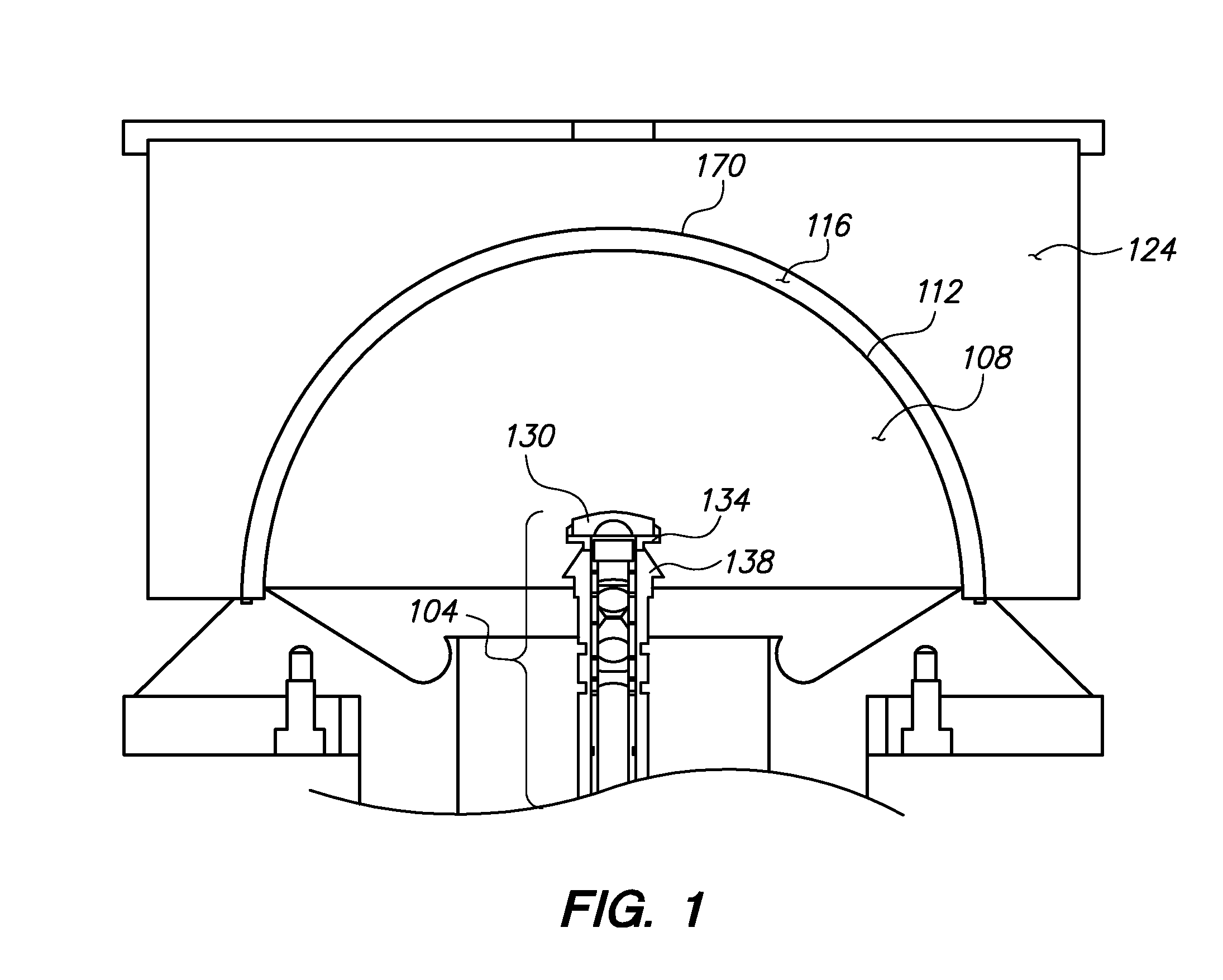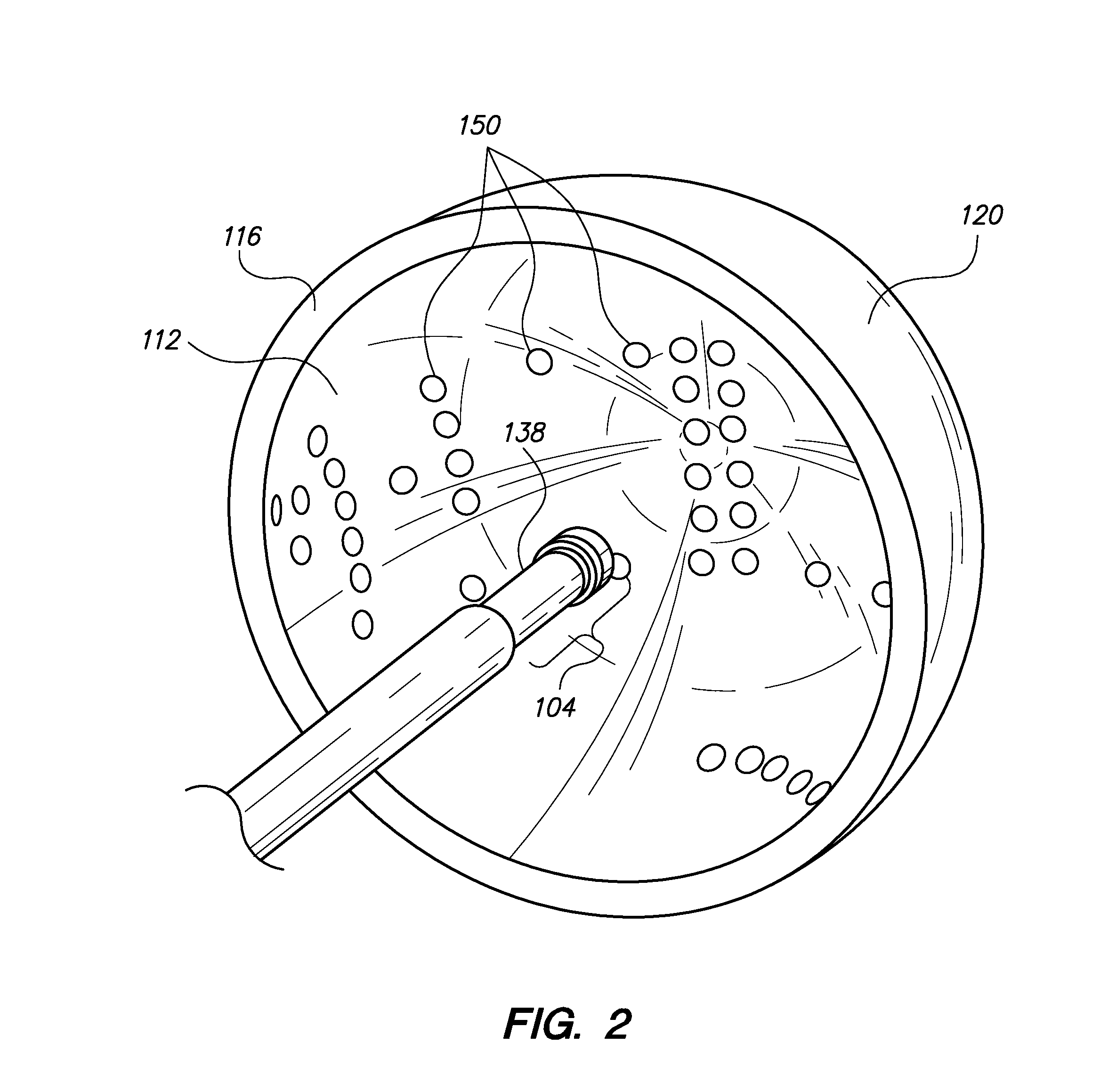Multipoint photonic doppler velocimetry using optical lens elements
a technology of optical lens elements and photonic doppler, which is applied in the field of photonic doppler velocimetry, can solve the problems of affecting the accuracy of measurement results, so as to increase the surface density coverage and increase the measurement point density
- Summary
- Abstract
- Description
- Claims
- Application Information
AI Technical Summary
Benefits of technology
Problems solved by technology
Method used
Image
Examples
example embodiment
[0059]A series of live dynamic PDV tests within hemispherical shells were fielded using a discrete collimator multipoint ball probe, a multiple lens array probe, and a fisheye probe design (described in the next section). All three gave high-quality data during testing. The fisheye lens' performance stood out over prior art probes in several ways.
[0060]First, the fisheye element does not encroach into the center of the imploding hemisphere. This is important because experimentalists ideally want the measurement to record data until the shock wave impacts the probe. Therefore, the smaller the probe the better it will record late-time information. Second, the physical size of the waist near the center of the cavity is smaller. This helps to fit the probe through a small opening for blast mitigation. Third, angular coverage can be more complete. Fourth, the fisheye probe is easier to assemble than prior art multipoint probes.
[0061]During these tests to minimize costs, the PDV recording...
PUM
 Login to View More
Login to View More Abstract
Description
Claims
Application Information
 Login to View More
Login to View More - R&D
- Intellectual Property
- Life Sciences
- Materials
- Tech Scout
- Unparalleled Data Quality
- Higher Quality Content
- 60% Fewer Hallucinations
Browse by: Latest US Patents, China's latest patents, Technical Efficacy Thesaurus, Application Domain, Technology Topic, Popular Technical Reports.
© 2025 PatSnap. All rights reserved.Legal|Privacy policy|Modern Slavery Act Transparency Statement|Sitemap|About US| Contact US: help@patsnap.com



